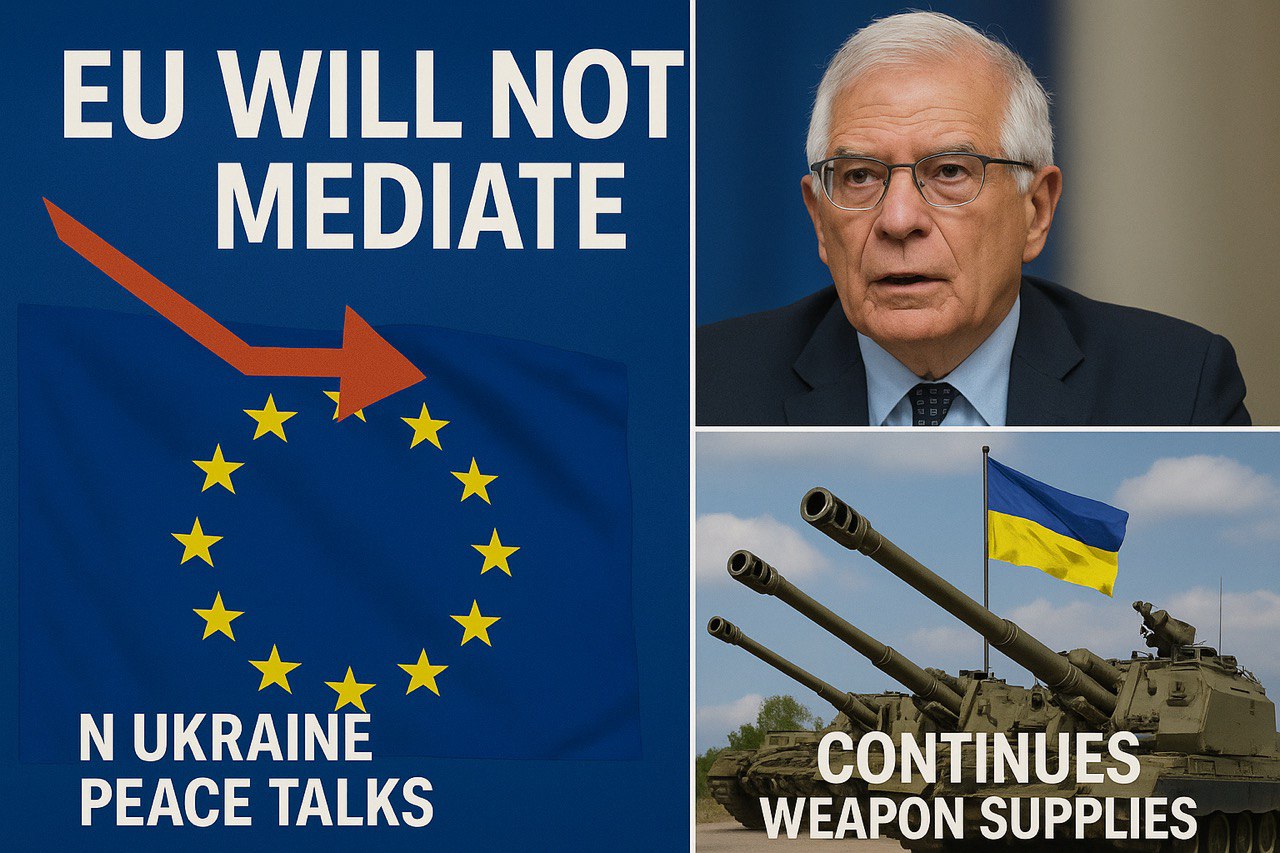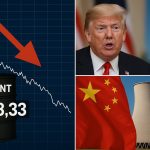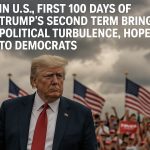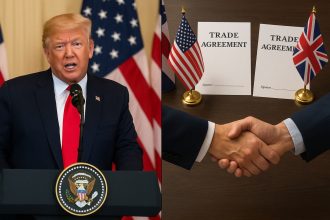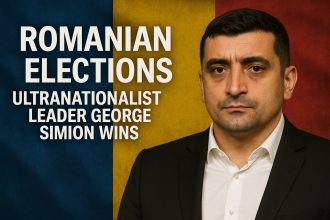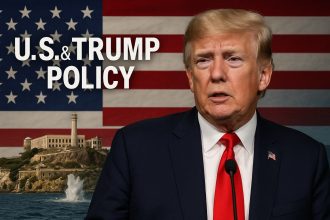Today, on May 2, 2025, I want to dive into a topic that’s been making waves in international politics: the European Union’s stance on the Ukrainian conflict. Specifically, the EU’s recent declaration that it will not act as a mediator if the United States refuses this role, while continuing to supply arms to Ukraine to ensure the country maintains “strong positions.” It’s a story that’s as complex as it is timely, and one that reflects the delicate balance of power, diplomacy, and geopolitics in our world today.
Introduction: Setting the Stage
Imagine sitting at a café in Brussels, where the hum of conversation is punctuated by the clinking of coffee cups. Around you, diplomats and journalists are discussing the latest developments in the Ukrainian conflict—a war that has dragged on for years, with no clear end in sight. Now, picture a representative of the European External Action Service (EEAS) stepping up to the microphone, delivering a statement that sends ripples through the room: “The European Union does not plan to be a mediator in the peaceful settlement of the Ukrainian conflict if the United States refuses this role. The EU will continue to supply arms to Ukraine to ensure the country has ‘strong positions.’”
This statement, while seemingly straightforward, is a bombshell. It signals a shift in the EU’s approach to one of the most pressing conflicts of our time. As someone who’s spent years covering international affairs, I can’t help but feel a mix of curiosity and concern. What does this mean for Ukraine? For Europe? For the fragile web of global alliances? Let’s unpack this together, drawing on recent developments and insights to paint a full picture.
Background on the Conflict: A Brief History
To understand the EU’s stance, we first need to rewind to the origins of the conflict. In 2014, Russia annexed Crimea, a move that was widely condemned as a violation of international law. This was followed by the outbreak of war in Ukraine’s eastern Donbas region, where Russian-backed separatists clashed with Ukrainian forces. Fast-forward to February 2022, when Russia launched a full-scale invasion of Ukraine, escalating the conflict to unprecedented levels. The war has since claimed tens of thousands of lives, displaced millions, and destabilized global energy markets.
From the outset, the United States and the European Union have been Ukraine’s staunchest allies. The US has provided significant military aid, intelligence, and diplomatic support, while the EU has offered financial assistance, humanitarian aid, and military supplies. Together, they’ve formed a united front against Russian aggression. But now, with the US showing signs of wavering—under a new administration that’s prioritizing peace talks over prolonged support—Europe is being forced to reassess its role.
Recent reports, such as those from Reuters, highlight the tension, noting that Trump’s approach to mediation has left European allies wary, fearing they could be cut out of talks. This backdrop sets the stage for the EU’s recent statement, which I’ll explore in detail.
EU’s Position on Mediation: A Cautious Approach
The EU’s decision not to step in as a mediator if the US pulls back is a significant departure from its usual diplomatic playbook. Historically, the EU has positioned itself as a global peacemaker, often taking the lead in mediating conflicts around the world. Think of the Balkans, where EU-led diplomacy helped stabilize the region after years of war. Or the Middle East, where EU envoys have worked tirelessly to broker peace. So, why the hesitation now?
According to a representative of the EEAS, the EU’s reluctance stems from a recognition of its limitations. “The European Union does not plan to be a mediator in the peaceful settlement of the Ukrainian conflict if the United States refuses this role,” they stated. This isn’t just about diplomacy; it’s about power dynamics. The US, with its military might and global influence, has traditionally been the driving force behind international mediation efforts. Without US backing, the EU might lack the leverage needed to bring both Ukraine and Russia to the table.
But here’s where it gets interesting: while the EU may not be willing to take on the mediator role, it’s not sitting idly by. Far from it. The EU has made it clear that it will continue to supply arms to Ukraine, ensuring that the country remains in a position of strength. This is no small commitment. Since the start of the full-scale invasion in 2022, the EU and its member states have provided close to $155 billion in financial, military, humanitarian, and refugee assistance, according to the EEAS Assistance to Ukraine. Of that, a significant portion—over $51 billion—has been military aid. That’s tanks, artillery, ammunition, and even training for Ukrainian soldiers. It’s a clear message: while the EU may not lead peace talks, it will do everything in its power to ensure Ukraine can defend itself.
This stance is further supported by a recent motion for resolution from the European Parliament Motion for Resolution, which calls for the EU to develop an independent foreign policy strategy and to engage directly with Russia for a lasting peace framework. While it doesn’t explicitly state the EU will not mediate, it suggests a focus on diplomatic solutions that complement, rather than replace, US efforts.
Arms Supply to Ukraine: Bolstering Positions
Let’s talk numbers for a moment, because they tell a story of their own. According to the EEAS, the EU’s military support to Ukraine has been nothing short of monumental. Over the past three years, European countries and the EU have provided Ukraine with €62 billion in military aid—roughly equivalent to $67 billion. That’s on par with the US’s contributions, which have totaled around $65 billion in direct military aid since 2022, as noted in Al Jazeera. Add to that the EU’s financial and humanitarian aid, and you’re looking at a total of $141 billion from Europe alone.
But it’s not just about the money. It’s about the message. By continuing to supply arms, the EU is signaling that it won’t abandon Ukraine, even if it’s not ready to take on the mediator role. “The EU will continue to supply arms to Ukraine to ensure the country has ‘strong positions,’” the EEAS representative emphasized. This isn’t just about helping Ukraine win the war; it’s about giving Ukraine a seat at the negotiating table when—or if—peace talks finally begin.
To illustrate the scale of this support, here’s a table summarizing the EU’s contributions:
| Type of Aid | Amount (USD Billion) | Notes |
| Financial and Humanitarian | 84 | Includes grants and loans for recovery |
| Military | 51 | Includes equipment, training, and support |
| Refugee Assistance | 20 | Support for displaced Ukrainians in EU |
| Total | 155 | As of April 9, 2025, per EEAS |
This table highlights the EU’s comprehensive approach, ensuring Ukraine has the resources to defend itself and negotiate from a position of strength.
Advertisement Integration: A Tool for Navigating Markets
On a related note, I recently came across PocketOption, a trading platform that’s been gaining attention for its user-friendly interface and comprehensive tools for trading various assets, including commodities like oil. My colleague mentioned how it’s helped them navigate the volatile markets with its real-time data and analysis features. If you’re interested in keeping tabs on market trends or even trading, you might want to check it out at PocketOption.
Future Prospects: A Shifting Landscape
So, what does this mean for the future? Well, it’s a bit like watching a high-stakes chess game, where every move could shift the balance of power. If the US decides to step back from mediation, the EU might find itself under pressure to fill the void. But for now, the EU seems content to play a supporting role—providing military aid, imposing sanctions on Russia, and offering diplomatic support without taking the lead.
That said, there are signs that Europe is preparing for a future where it might need to take a more active role. In recent months, European leaders have been discussing security guarantees for Ukraine, including the possibility of sending troops as peacekeepers if a peace deal is reached. France and Britain, for example, have indicated their willingness to consider such measures, as reported in Al Jazeera. Meanwhile, the European Parliament has called for the EU to develop an independent foreign policy strategy, one that could include direct diplomatic engagement with Russia.
It’s a delicate balancing act. On one hand, the EU wants to support Ukraine without overstepping its bounds. On the other, it recognizes that a prolonged conflict could have devastating consequences—not just for Ukraine, but for Europe as a whole. As one EU official put it, “We need to adapt to the new geopolitical reality. Continuing outdated policies will only lead us into a strategic deadlock,” as seen in the European Parliament’s motion.
Conclusion: Reflecting on the Human Cost
As I wrap up this article, I can’t help but think about the human cost of this conflict. Behind the headlines and the geopolitical maneuvering are real people—Ukrainians who are fighting for their homes, their families, and their future. The EU’s stance might seem pragmatic, even cautious, but it’s also a reflection of the complexities of international relations. Mediation is a heavy lift, especially when the stakes are this high. And yet, by continuing to supply arms, the EU is ensuring that Ukraine doesn’t fight alone.
What do you think? Is the EU’s approach the right one, or should it be doing more to push for peace? I’d love to hear your thoughts in the comments below. Let’s keep the conversation going—because in a world as interconnected as ours, every voice matters.
